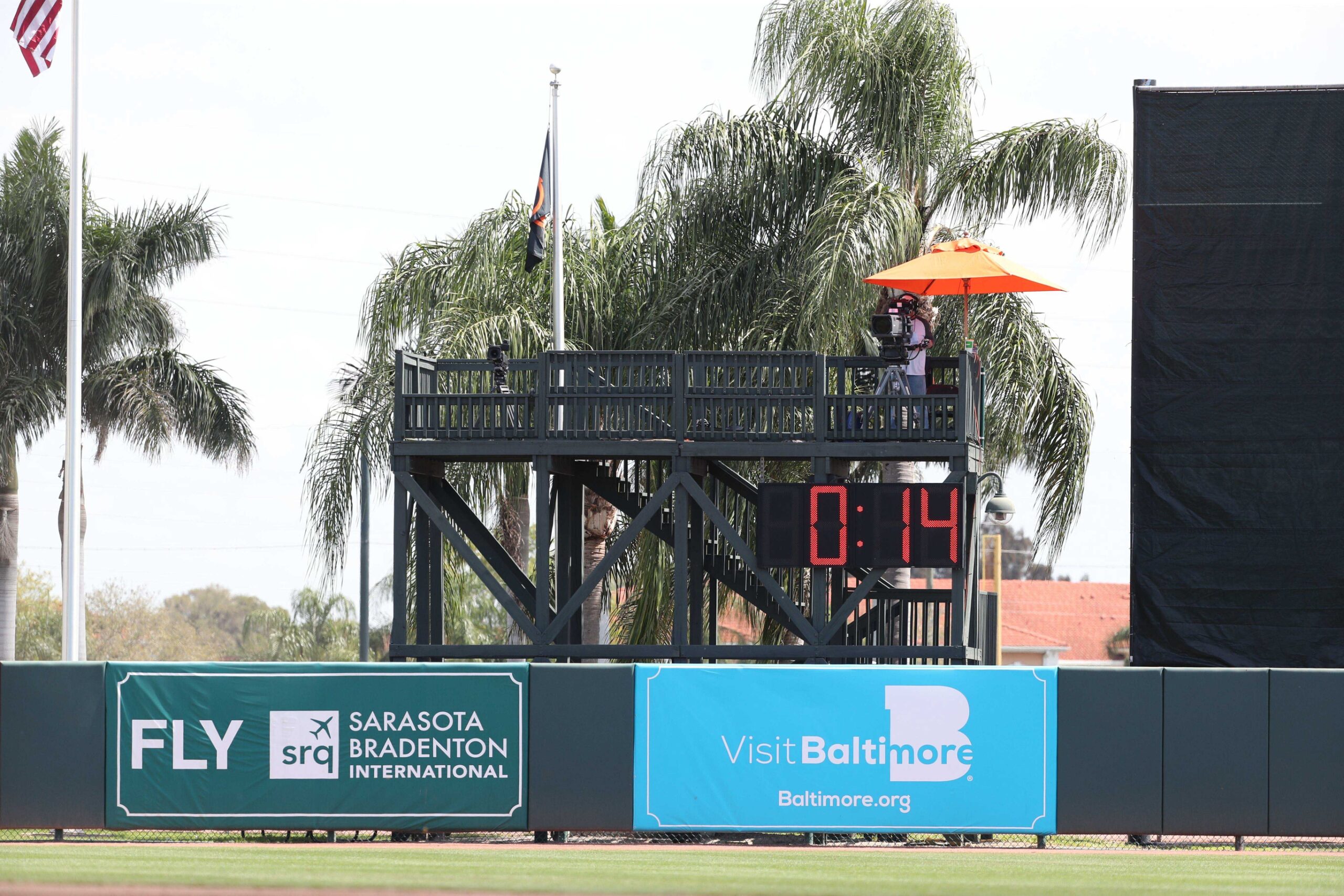
Kim Klement-USA TODAY Sports
One of the rule changes, and possibly the most significant that we will see in 2023, is the introduction of the pitch clock in Major League Baseball. Commissioner Rob Manfred is determined to shorten games, quicken the pace of play, and add more action to the game. The pitch clock has demonstrated its ability to achieve the first of those objectives. Minor league game times have been reduced between 20 and 30 minutes when the pitch clock is used. So how will it work?
In an article for MLB.com, Anthony Castrovince provides some details. First, let’s get ready for new term, the “FTC” or “Field Timing Coordinator.” This is the person who will sit in the press box, and press a button to start the pitch clock. The duration on the pitch timer is 15 seconds with the bases empty, 20 seconds with runners on base. The timer starts the moment the pitcher receives the ball and stops the moment he goes into his motion.
But there are nuances on the start and stop of the timer. The timer starts the moment the pitcher receives the ball and all fielders are set (perhaps an outfielder has gone into foul territory in pursuit of a ball that landed in the stands. Even if the pitcher has a new ball, the timer does not start until the outfielder is set in his position).
The timer stops when the pitcher starts his motion. But this means two different things, depending upon whether the hurler is working from the windup or the stretch. When working from the windup, the clock stops on the first foot movement by the pitcher. However, if the pitcher is in the stretch, the timer does not stop when the pitcher brings his feet together. Rather, it stops when he raises his leg to begin the pitching motion. Got that?
How about coordination with the on-field umpires? Castrovince provides the following:
We’re gonna meet [with the FTCs] before each game at a certain time,” (crew chief Todd) Tichenor said, “whether it’s 40 minutes or 50 minutes before the game, they’ll come down, introduce themselves and I’m going to try to make them feel a part of the crew. I want them to be a part of the team. We don’t go until they go, and vice versa.”
There is a set of hand signals used by the umps, who will have the discretion to stop the clock in special circumstances, to convey instructions to the FTCs, such as twirling the finger around (similar to a home run call) when a reset of the clock is needed.
And during the game, the FTCs will wear a headset and the umpires will wear an in-ear piece and a microphone, allowing the two parties to check in with each other between innings to go over any issues that arose and ensure everything is running properly.
The team at-bat will also be subject to timing. There will be 30 seconds allotted between batters. That means the next batter must be in the box and ready to go within 30 seconds, but within 30 seconds of when? If there is a hit, the timer starts when the ball is in the infield and time is out. After a home run, the clock begins to tick when the man who just added to his home run total touches home plate.
MLB is serious about the FTC position, so much so that the people being considered for the role are practicing now during college-level winter tournaments. There will need to be consistency in application of the timer, and in the article, there are quotes from FTCs about feeling a sense of pressure. One FTC working a tournament said, “I could be perfect for 99 events in a row.” But then, if the catcher throws the ball back to the pitcher and I cloud out for two seconds and miss it, that’s what I’m going to be known for.
The pitch clock will take some getting used to, by the FTCs and the fans. For a sport that took 50 years to standardize the designated hitter rule, the rule changes are at a fast and furious pace now. Get ready.
The good news is that we will have the opportunity to see “MLB 2.0” on display from Florida and Arizona in just two weeks.
















